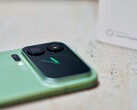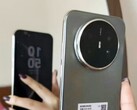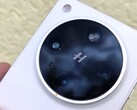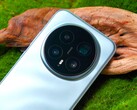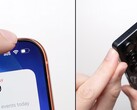Verdict - Xiaomi 17 Pro Max
The Xiaomi 17 Pro Max is a fantastic, lightning-fast smartphone with a bright screen, fast storage, snappy internet, and every feature you could wish for.
Its massive battery results in truly excellent battery life, and currently, few Android smartphones can match it. Apple, on the other hand, almost manages to keep pace with a much smaller battery thanks to numerous software optimizations.
The bright screen also displays HDR content effectively, and the premium-feeling case is impeccably crafted.
The real highlight is the relatively large display on the back, but it raises a few questions: What will future app support look like? And could it be very fragile when dropped?
Xiaomi is also staying tight-lipped about the operating system update support and sustainability.
Furthermore, the phone is likely not to be officially released outside of Asia. While importing it through specialized retailers like TradingShenzhen is a relatively straightforward process, restrictions such as the lack of Android Auto and eSIM support remain.
Nevertheless, its dedicated camera sensor and secondary display make the Xiaomi 17 Pro Max a very compelling high-end phone.
Pros
Cons
Price and availability
Our device lender, TradingShenzhen, currently offers the Xiaomi Mi 17 Pro Max, starting at $1,088.
As is normally the case, this retailer doesn't charge any additional import fees from Hong Kong.
Table of Contents
- Verdict - Xiaomi 17 Pro Max
- Specifications
- Case – Premium and with slim bezels
- Features – Relatively affordable with plenty of storage
- Software – Also with Google Play
- Communication and GNSS – WiFi 7 is included
- Telephone functions and voice quality – Good sound
- Cameras – Can you reach the top with a custom sensor?
- Accessories and warranty – Charger included
- Input devices and operation – A fast touchscreen
- Display – The Xiaomi phone has a special subpixel layout
- Performance – Megapower throttled
- Games – Gaming primarily at 60fps
- Emissions – A hothead with stereo speakers
- Battery runtime – A huge battery means long runtimes
- Notebookcheck overall rating
- Possible alternatives compared
17 Pro Max – anyone hearing that name probably immediately thinks of Apple's largest iPhone model. And it would appear Xiaomi has deliberately copied the name of one of the world's most successful smartphones.
The 17 Pro Max is currently the largest model in the 17 series, at least until December when the Xiaomi 17 Ultra launches.
Our review takes a closer look at whether the secondary rear display is genuinely useful and whether Xiaomi (and its bold choice of name) can actually compete with Apple's flagship phone.
Specifications
Case – Premium and with slim bezels
With the Xiaomi 17 Pro having become significantly more compact, Xiaomi apparently still wanted to offer a top smartphone for its large-screen fans.
To achieve this, the Xiaomi 17 Pro Max features a 6.9-inch screen and a body that is almost exactly the same size as the Samsung Galaxy S25 Ultra and Apple iPhone 17 Pro Max.
The front of the phone boasts a screen-to-body ratio of almost 91% with bezels that are barely visible. Xiaomi has opted to use its own proprietary Xiaomi Dragon Crystal Glass 3 for protection, and it is said to only show scratches on materials with a Mohs hardness of 7.
The phone is IP68-rated for water and dust resistance, which means it can be used not only in dirty environments but also underwater.
The aluminum frame provides the phone with good stability, meaning you can't twist it using your bare hands.
However, the rear screen poses a stability question mark, with it protruding quite far from the case and not possessing the same high-quality protective glass as the front.
The simple matte back looks elegant and is available in dark gray, white, purple, or green.
Features – Relatively affordable with plenty of storage
The Xiaomi 17 Pro Max comes in three storage variants:
- 12 GB of RAM / 512 GB of UFS 4.1 data storage
- 16 GB of RAM / 512 GB of UFS 4.1 data storage
- 16 GB of RAM / 1,024 GB of UFS 4.1 data storage
Xiaomi doesn't offer quite as many options as Apple or Samsung. However, when it comes to price, it significantly undercuts its competitors, hovering at around $1,000.
The USB-C port can transfer data at up to 5 Gbps and also features a DisplayPort mode, which allows you to create a wired connection between the phone and external monitors.
The included ultra-wide band support ensures fast data exchange, and precise location tracking is included, as well as NFC for mobile payment services and ID applications.
Two nano-SIM slots are the only way to use a SIM card since eSIMs are not widely used in China.
Software – Also with Google Play
Xiaomi's HyperOS 3 is based on Android 16, which makes it a very up-to-date operating system. Google Play Services are already on board and can be fully enabled in the settings.
However, the Chinese ROM comes with many pre-installed apps you might feel the need to uninstall, since they are practically unusable in Western regions. Furthermore, the only Western language option is English. Other example limitations, such as Android Auto, are also present.
The duration of updates is also uncertain. A the time of this review, the security updates on our device were from a very up-to-date October 2025.
Sustainability
Unfortunately, no information is available either regarding the smartphone's carbon footprint or the recycling rate of the materials used. It is also unclear whether Xiaomi will provide spare parts and repair manuals.
On the positive side, the phone comes in plastic-free packaging.
Communication and GNSS – WiFi 7 is included
Currently, WiFi 7 is the most advanced WiFi standard and is also featured on the Xiaomi 17 Pro Max; however, our Asus ROG Rapture AXE11000 reference router isn't yet designed for it. Using the WiFi 6E standard, the phone still achieved fast data speeds of up to 1,748 Mbps. This will allow you to fully take advantage of a gigabit internet connection and leave room for even faster networks.
The reception was excellent close to the router, and websites loaded very swiftly. At a distance of ten meters and through three walls, the signal strength was still half, and although you could tell that the transmission speed was a bit slower, browsing was still perfectly manageable.
When it comes to mobile connectivity, this high-end phone supports all the necessary frequencies to allow you to use LTE and 5G networks worldwide, which makes the Xiaomi 17 Pro Max ideal for travel.
During our spot check tests, the reception was consistently strong and remained sufficient even in challenging locations between tall buildings.
| Networking | |
| Xiaomi 17 Pro Max | |
| iperf3 transmit AXE11000 | |
| iperf3 receive AXE11000 | |
| iperf3 transmit AXE11000 6GHz | |
| iperf3 receive AXE11000 6GHz | |
| Apple iPhone 17 Pro Max | |
| iperf3 transmit AXE11000 | |
| iperf3 receive AXE11000 | |
| iperf3 transmit AXE11000 6GHz | |
| iperf3 receive AXE11000 6GHz | |
| Samsung Galaxy S25 Ultra | |
| iperf3 transmit AXE11000 | |
| iperf3 receive AXE11000 | |
| iperf3 transmit AXE11000 6GHz | |
| iperf3 receive AXE11000 6GHz | |
| Oppo Find X8 Ultra | |
| iperf3 transmit AXE11000 | |
| iperf3 receive AXE11000 | |
| Vivo X200 Ultra | |
| iperf3 transmit AXE11000 | |
| iperf3 receive AXE11000 | |
| Average 802.11 a/b/g/n/ac/ax/be | |
| iperf3 transmit AXE11000 | |
| iperf3 receive AXE11000 | |
| iperf3 transmit AXE11000 6GHz | |
| iperf3 receive AXE11000 6GHz | |
| Average of class Smartphone | |
| iperf3 transmit AXE11000 | |
| iperf3 receive AXE11000 | |
| iperf3 transmit AXE11000 6GHz | |
| iperf3 receive AXE11000 6GHz | |
Stepping outdoors with the Xiaomi 17 Pro Max, we were located quickly with an accuracy of 3 meters. Every major satellite network is available, although SBAS (Sky-Based Assigned Search), which allows for even greater precision, is not supported.
We were keen to test its accuracy in a real-life situation. To achieve this, we went on a bike ride and were accompanied by a Garmin Venu 2 smartwatch for comparison purposes.
The Xiaomi phone tracked our route well, and only occasionally placed us slightly off-center on the road, albeit without any major errors. Overall, it's also a very usable navigation device.
Telephone functions and voice quality – Good sound
Xiaomi has developed its own easy-to-use phone app. The Carrier Services tab is of little use in Europe, since network providers here don't allow you to use this feature to check your balance. It also advertises phone plans (!) that are only available in China.
Features such as VoLTE and VoWiFi are supported, and you can even call other nearby Xiaomi phones via Bluetooth.
Call quality is good, with our contact person confirming that our voice sounded clear during the test call. In turn, they also sounded very clear. Calls made with the speakerphone and the hands-free microphone work flawlessly.
Cameras – Can you reach the top with a custom sensor?
The cameras use sensors from three different manufacturers: Omnivision sensors are utilized for the front-facing camera and the ultra-wide-angle camera, and a Samsung sensor is used for the telephoto lens and its 5x periscope zoom. The main camera features a rather mysterious sensor, which our system hardware app identified as the STX9500U, although Xiaomi itself refers to it as the Light Hunter 950L. According to Chinese sources, this could be either a SmartSens SC590XS or another Omnivision sensor.
Every camera has a 50-megapixel resolution, but they typically shoot 12.5-megapixel images. The full resolution can, of course, be activated via a special mode. The camera system was developed in cooperation with Leica.
Photos from the main camera appear detailed, offer good dynamic range, and manage to capture challenging situations, such as yellow blossoms in bright light, with a high degree of detail. In low light, the sharpness remains high, and many details are discernible, although the dynamic range in dark areas could be somewhat better.
The wide-angle camera takes good shots, which are slightly distorted at the edges, and at high magnification, fewer details are visible. The front camera takes sharp and detailed selfies.
Image comparison
Choose a scene and navigate within the first image. One click changes the position on touchscreens. One click on the zoomed-in image opens the original in a new window. The first image shows the scaled photograph of the test device.
PlantEnvironmentLow lightWide-angleVideos can be recorded at a maximum resolution of 8K at 30fps, and at 4K at up to 120fps. The recording quality is excellent, autofocus is responsive and almost imperceptible, and exposure correction is also immediate.
Color reproduction can be described as slightly oversaturated, but overall deviates only minimally from the ideal.
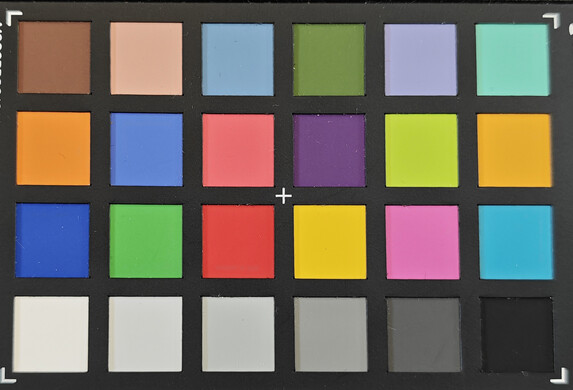

Accessories and warranty – Charger included
The box contains a charger, USB cable, SIM tool, and a transparent silicone bumper. Even in Germany, you can find some accessories online, such as smartphone cases. Our device lender, Tradingshenzhen, also includes an adapter for Western power outlets.
Xiaomi provides a 12-month warranty. However, we would suggest using an importer for this, since direct shipping to China is both risky and very expensive.
Input devices and operation – A fast touchscreen
Touchscreen inputs are recognized very accurately thanks to the 300 Hz sampling rate. The 120 Hz screen also responds swiftly, and we also really like the haptic feedback you get from the vibration motor.
The rear AMOLED display is also reliable, although there isn't much you can do with it: Besides the camera viewfinder, clock, and a pedometer, it can currently only display notifications, and apps cannot be launched directly from the screen.
Xiaomi's 3D ultrasonic fingerprint sensor technology is hidden behind the screen on the front. It works reliably and unlocks the phone very quickly. Facial recognition can also be used via the front camera. This works quite reliably, but it is less secure and more open to manipulation.
Display – The Xiaomi phone has a special subpixel layout
The large 6.9-inch AMOLED screen features LTPO technology, which allows it to dynamically adjust the refresh rate between one and 120 frames per second. This saves energy when viewing static content and simultaneously ensures smooth motion tracking of dynamic content.
On paper, the resolution is slightly lower than some other phones, but it offers a unique feature: Our microscope image revealed an unusual subpixel arrangement. This arrangement is designed in such a way that each pixel actually receives a full LED of each of the three primary colors, which Xiaomi claims makes the display more efficient. In our tests, the image quality proved to be just as high as other phones.
With a maximum brightness of nearly 1,100 cd/m², the phone isn't quite as bright as some high-end models, but it's still perfectly adequate for full-screen white. The brightness levels of well over 3,000 cd/m² that are also possible on smaller areas guarantee excellent HDR performance.
| |||||||||||||||||||||||||
Brightness Distribution: 95 %
Center on Battery: 1099 cd/m²
Contrast: ∞:1 (Black: 0 cd/m²)
ΔE ColorChecker Calman: 1.05 | ∀{0.5-29.43 Ø4.78}
ΔE Greyscale Calman: 1.7 | ∀{0.09-98 Ø5}
103% sRGB (Calman 2D)
Gamma: 2.232
CCT: 6779 K
| Xiaomi 17 Pro Max AMOLED, 2608x1200, 6.9" | Apple iPhone 17 Pro Max OLED, 2868x1320, 6.9" | Samsung Galaxy S25 Ultra Dynamic AMOLED 2X, 3120x1440, 6.9" | Oppo Find X8 Ultra AMOLED, 3168x1440, 6.8" | Vivo X200 Ultra AMOLED, 3168x1440, 6.8" | |
|---|---|---|---|---|---|
| Screen | -13% | -45% | 19% | 7% | |
| Brightness middle (cd/m²) | 1099 | 1054 -4% | 1357 23% | 1366 24% | 1286 17% |
| Brightness (cd/m²) | 1067 | 1059 -1% | 1350 27% | 1325 24% | 1238 16% |
| Brightness Distribution (%) | 95 | 93 -2% | 94 -1% | 95 0% | 93 -2% |
| Black Level * (cd/m²) | |||||
| Colorchecker dE 2000 * | 1.05 | 1.57 -50% | 3.1 -195% | 0.88 16% | 1.04 1% |
| Colorchecker dE 2000 max. * | 2.38 | 2.8 -18% | 4.7 -97% | 1.55 35% | 2.26 5% |
| Greyscale dE 2000 * | 1.7 | 1.7 -0% | 2.2 -29% | 1.5 12% | 1.6 6% |
| Gamma | 2.232 99% | 2.32 95% | 2 110% | 2.303 96% | 2.249 98% |
| CCT | 6779 96% | 6993 93% | 6391 102% | 6626 98% | 6575 99% |
* ... smaller is better
Screen Flickering / PWM (Pulse-Width Modulation)
| Screen flickering / PWM detected | 122.4 Hz Amplitude: 19 % | ||
The display backlight flickers at 122.4 Hz (worst case, e.g., utilizing PWM) . The frequency of 122.4 Hz is very low, so the flickering may cause eyestrain and headaches after extended use. In comparison: 53 % of all tested devices do not use PWM to dim the display. If PWM was detected, an average of 8111 (minimum: 5 - maximum: 343500) Hz was measured. | |||
A series of measurements with a fixed zoom level and different brightness settings (The amplitude curve at minimum brightness appears flat, but this is due to the scaling. The enlarged version of the amplitude at minimum brightness can be seen in the info box.)
You'll have to live with PWM flickering, but it's adapted to the 120 Hz refresh rate and therefore potentially less bothersome. Nevertheless, users sensitive to such issues should try out the screen before pulling the trigger on a purchase.
The display of grayscale and colors is fine-detailed and quite accurate. In "Original Color Pro" mode, no differences from the reference colors are discernible to the naked eye.
Display Response Times
| ↔ Response Time Black to White | ||
|---|---|---|
| 34.1 ms ... rise ↗ and fall ↘ combined | ↗ 0.5 ms rise | |
| ↘ 33.6 ms fall | ||
| The screen shows slow response rates in our tests and will be unsatisfactory for gamers. In comparison, all tested devices range from 0.1 (minimum) to 240 (maximum) ms. » 92 % of all devices are better. This means that the measured response time is worse than the average of all tested devices (20.2 ms). | ||
| ↔ Response Time 50% Grey to 80% Grey | ||
| 92 ms ... rise ↗ and fall ↘ combined | ↗ 91.4 ms rise | |
| ↘ 0.6 ms fall | ||
| The screen shows slow response rates in our tests and will be unsatisfactory for gamers. In comparison, all tested devices range from 0.165 (minimum) to 636 (maximum) ms. » 100 % of all devices are better. This means that the measured response time is worse than the average of all tested devices (31.6 ms). | ||
Performance – Megapower throttled
Equipped with the Qualcomm Snapdragon 8 Elite Gen 5 SoC, the Xiaomi 17 Pro Max possesses one of the fastest Android smartphone processors you can currently get your hands on. In terms of pure processing power, it is indeed very good, with only the current iPhone generation being faster.
However, in the system benchmarks, our review device occasionally faltered and fell slightly behind the Xiaomi 17 Pro. We'll see the reason for this shortly in the emissions tests.
During AI calculations, the phone performed somewhat inconsistently, but all in all, it kept up with the comparison devices.
| UL Procyon AI Inference for Android - Overall Score NNAPI | |
| Samsung Galaxy S25 Ultra | |
| Average Qualcomm Snapdragon 8 Elite Gen 5 (22372 - 23712, n=5) | |
| Xiaomi 17 Pro Max | |
| Vivo X200 Ultra | |
| Average of class Smartphone (3769 - 81594, n=138, last 2 years) | |
| Oppo Find X8 Ultra | |
With the Adreno 840, you also get one of the fastest graphics solutions currently available, which supports modern features such as mesh shading and ray tracing.
However, the Xiaomi 17 Pro Max can't quite keep pace with other high-end smartphones in the GPU benchmarks. Despite this, the difference is unlikely to be noticeable in real-life situations, since there are very few apps or games that can push the graphics chip to its limits.
GFXBench (DX / GLBenchmark) 2.7: T-Rex Onscreen | 1920x1080 T-Rex Offscreen
GFXBench 3.0: on screen Manhattan Onscreen OGL | 1920x1080 1080p Manhattan Offscreen
GFXBench 3.1: on screen Manhattan ES 3.1 Onscreen | 1920x1080 Manhattan ES 3.1 Offscreen
GFXBench: on screen Car Chase Onscreen | 1920x1080 Car Chase Offscreen | on screen Aztec Ruins High Tier Onscreen | 2560x1440 Aztec Ruins High Tier Offscreen | on screen Aztec Ruins Normal Tier Onscreen | 1920x1080 Aztec Ruins Normal Tier Offscreen | 3840x2160 4K Aztec Ruins High Tier Offscreen
| 3DMark / Wild Life Extreme Unlimited | |
| Samsung Galaxy S25 Ultra | |
| Vivo X200 Ultra | |
| Oppo Find X8 Ultra | |
| Xiaomi 17 Pro Max | |
| Apple iPhone 17 Pro Max | |
| 3DMark / Wild Life Extreme | |
| Samsung Galaxy S25 Ultra | |
| Vivo X200 Ultra | |
| Oppo Find X8 Ultra | |
| Xiaomi 17 Pro Max | |
| Apple iPhone 17 Pro Max | |
| 3DMark / Wild Life Unlimited Score | |
| Samsung Galaxy S25 Ultra | |
| Apple iPhone 17 Pro Max | |
| Oppo Find X8 Ultra | |
| Vivo X200 Ultra | |
| Xiaomi 17 Pro Max | |
| 3DMark / Solar Bay Score | |
| Samsung Galaxy S25 Ultra | |
| Vivo X200 Ultra | |
| Oppo Find X8 Ultra | |
| Apple iPhone 17 Pro Max | |
| Xiaomi 17 Pro Max | |
| 3DMark / Solar Bay Unlimited Score | |
| Samsung Galaxy S25 Ultra | |
| Apple iPhone 17 Pro Max | |
| Vivo X200 Ultra | |
| Oppo Find X8 Ultra | |
| Xiaomi 17 Pro Max | |
| 3DMark / Steel Nomad Light Unlimited Score | |
| Apple iPhone 17 Pro Max | |
| Vivo X200 Ultra | |
| Oppo Find X8 Ultra | |
| Samsung Galaxy S25 Ultra | |
| 3DMark / Steel Nomad Light Score | |
| Apple iPhone 17 Pro Max | |
| Samsung Galaxy S25 Ultra | |
| Vivo X200 Ultra | |
| Oppo Find X8 Ultra | |
| GFXBench (DX / GLBenchmark) 2.7 / T-Rex Onscreen | |
| Samsung Galaxy S25 Ultra | |
| Vivo X200 Ultra | |
| Xiaomi 17 Pro Max | |
| Oppo Find X8 Ultra | |
| Apple iPhone 17 Pro Max | |
| GFXBench (DX / GLBenchmark) 2.7 / T-Rex Offscreen | |
| Vivo X200 Ultra | |
| Oppo Find X8 Ultra | |
| Apple iPhone 17 Pro Max | |
| Samsung Galaxy S25 Ultra | |
| Xiaomi 17 Pro Max | |
| GFXBench 3.0 / Manhattan Onscreen OGL | |
| Samsung Galaxy S25 Ultra | |
| Vivo X200 Ultra | |
| Xiaomi 17 Pro Max | |
| Oppo Find X8 Ultra | |
| Apple iPhone 17 Pro Max | |
| GFXBench 3.0 / 1080p Manhattan Offscreen | |
| Vivo X200 Ultra | |
| Samsung Galaxy S25 Ultra | |
| Oppo Find X8 Ultra | |
| Apple iPhone 17 Pro Max | |
| Xiaomi 17 Pro Max | |
| GFXBench 3.1 / Manhattan ES 3.1 Onscreen | |
| Samsung Galaxy S25 Ultra | |
| Vivo X200 Ultra | |
| Xiaomi 17 Pro Max | |
| Oppo Find X8 Ultra | |
| Apple iPhone 17 Pro Max | |
| GFXBench 3.1 / Manhattan ES 3.1 Offscreen | |
| Vivo X200 Ultra | |
| Oppo Find X8 Ultra | |
| Samsung Galaxy S25 Ultra | |
| Apple iPhone 17 Pro Max | |
| Xiaomi 17 Pro Max | |
| GFXBench / Car Chase Onscreen | |
| Vivo X200 Ultra | |
| Samsung Galaxy S25 Ultra | |
| Xiaomi 17 Pro Max | |
| Oppo Find X8 Ultra | |
| Apple iPhone 17 Pro Max | |
| GFXBench / Car Chase Offscreen | |
| Vivo X200 Ultra | |
| Oppo Find X8 Ultra | |
| Apple iPhone 17 Pro Max | |
| Samsung Galaxy S25 Ultra | |
| Xiaomi 17 Pro Max | |
| GFXBench / Aztec Ruins High Tier Onscreen | |
| Samsung Galaxy S25 Ultra | |
| Xiaomi 17 Pro Max | |
| Vivo X200 Ultra | |
| Oppo Find X8 Ultra | |
| Apple iPhone 17 Pro Max | |
| GFXBench / Aztec Ruins High Tier Offscreen | |
| Vivo X200 Ultra | |
| Oppo Find X8 Ultra | |
| Samsung Galaxy S25 Ultra | |
| Apple iPhone 17 Pro Max | |
| Xiaomi 17 Pro Max | |
| GFXBench / Aztec Ruins Normal Tier Onscreen | |
| Samsung Galaxy S25 Ultra | |
| Vivo X200 Ultra | |
| Xiaomi 17 Pro Max | |
| Oppo Find X8 Ultra | |
| Apple iPhone 17 Pro Max | |
| GFXBench / Aztec Ruins Normal Tier Offscreen | |
| Vivo X200 Ultra | |
| Oppo Find X8 Ultra | |
| Apple iPhone 17 Pro Max | |
| Samsung Galaxy S25 Ultra | |
| Xiaomi 17 Pro Max | |
| GFXBench / 4K Aztec Ruins High Tier Offscreen | |
| Oppo Find X8 Ultra | |
| Samsung Galaxy S25 Ultra | |
| Vivo X200 Ultra | |
| Apple iPhone 17 Pro Max | |
| Xiaomi 17 Pro Max | |
Using the Xiaomi 17 Pro Max to surf the internet is a very quick and easy experience, with even large pages loading almost instantaneously, and everything running smoothly.
| Jetstream 2 - 2.0 Total Score | |
| Apple iPhone 17 Pro Max (Safari Mobile 26.0) | |
| Samsung Galaxy S25 Ultra (Chrome 132) | |
| Average of class Smartphone (23.8 - 387, n=152, last 2 years) | |
| Average Qualcomm Snapdragon 8 Elite Gen 5 (70.1 - 146.2, n=4) | |
| Xiaomi 17 Pro Max (Chrome 141) | |
| Speedometer 2.0 - Result 2.0 | |
| Apple iPhone 17 Pro Max (Safari Mobile 26.0) | |
| Xiaomi 17 Pro Max (Chrome 141) | |
| Average Qualcomm Snapdragon 8 Elite Gen 5 (593 - 624, n=3) | |
| Samsung Galaxy S25 Ultra (Chrome 132) | |
| Average of class Smartphone (15.2 - 643, n=126, last 2 years) | |
| Speedometer 3 - Score 3.0 | |
| Apple iPhone 17 Pro Max (Safari Mobile 26.0) | |
| Samsung Galaxy S25 Ultra (Chrome 132) | |
| Vivo X200 Ultra (Chrome 137) | |
| Xiaomi 17 Pro Max (Chrome 141) | |
| Average Qualcomm Snapdragon 8 Elite Gen 5 (16.5 - 21.3, n=4) | |
| Average of class Smartphone (1.03 - 42.8, n=126, last 2 years) | |
| WebXPRT 4 - Overall | |
| Apple iPhone 17 Pro Max (Safari Mobile 26.0) | |
| Xiaomi 17 Pro Max (Chrome 141) | |
| Samsung Galaxy S25 Ultra (Chrome 132) | |
| Average Qualcomm Snapdragon 8 Elite Gen 5 (102 - 278, n=5) | |
| Vivo X200 Ultra (Chrome 137) | |
| Average of class Smartphone (27 - 306, n=148, last 2 years) | |
| Oppo Find X8 Ultra (Chrome 136) | |
| Octane V2 - Total Score | |
| Apple iPhone 17 Pro Max (Safari Mobile 26.0) | |
| Xiaomi 17 Pro Max (Chrome 141) | |
| Samsung Galaxy S25 Ultra (Chrome 132) | |
| Vivo X200 Ultra (Chrome 137) | |
| Average Qualcomm Snapdragon 8 Elite Gen 5 (50987 - 99417, n=5) | |
| Oppo Find X8 Ultra (Chrome 136) | |
| Average of class Smartphone (2228 - 121337, n=200, last 2 years) | |
| Mozilla Kraken 1.1 - Total | |
| Average of class Smartphone (257 - 28190, n=155, last 2 years) | |
| Oppo Find X8 Ultra (Chrome 136) | |
| Average Qualcomm Snapdragon 8 Elite Gen 5 (306 - 635, n=5) | |
| Vivo X200 Ultra | |
| Samsung Galaxy S25 Ultra (Chrome 132) | |
| Xiaomi 17 Pro Max (Chrome 141) | |
| Apple iPhone 17 Pro Max (Safari Mobile 26.0) | |
* ... smaller is better
UFS 4.1 storage is responsible for making storage access extremely fast and enabling a significant speed increase even when transferring numerous small files.
| Xiaomi 17 Pro Max | Samsung Galaxy S25 Ultra | Oppo Find X8 Ultra | Vivo X200 Ultra | Average 1TB UFS 4.1 Flash | Average of class Smartphone | |
|---|---|---|---|---|---|---|
| AndroBench 3-5 | -27% | -19% | -18% | -18% | -46% | |
| Sequential Read 256KB (MB/s) | 3971.4 | 3823.28 -4% | 3754.43 -5% | 3358.64 -15% | 3689 ? -7% | 2213 ? -44% |
| Sequential Write 256KB (MB/s) | 3899.9 | 3361.24 -14% | 3564.22 -9% | 2998.87 -23% | 3761 ? -4% | 1831 ? -53% |
| Random Read 4KB (MB/s) | 548.4 | 287.85 -48% | 375.9 -31% | 462.41 -16% | 344 ? -37% | 294 ? -46% |
| Random Write 4KB (MB/s) | 561.3 | 331.61 -41% | 389.28 -31% | 459.33 -18% | 423 ? -25% | 333 ? -41% |
Games – Gaming primarily at 60fps
The Xiaomi 17 Pro Max is a great gaming phone thanks to both its powerful CPU and GPU. Its long-lasting battery also ensures extended gaming sessions without needing to reach for a charger.
We achieved a consistently stable 60fps in almost every game and mode we tested. We only observed the frame rate dropping to 40fps when playing PUBG Mobile at UltraHD.
We measured these frame rates using the GameBench software.
Emissions – A hothead with stereo speakers
Temperature
Under load, the phone heats up noticeably, and after a period of time, the frame of the device gets really hot. Subsequently, the phone overloaded twice in our stress test and had to cool down before the benchmark was able to continue.
The recorded case temperatures of over 50°C are quite noticeable and can be significantly higher in warmer environments.
The 3DMark stress tests also revealed significant throttling under sustained load, with the phone losing almost 40% of its performance in the Wild Life test.
This extreme throttling could explain why the Xiaomi 17 Pro Max doesn't quite manage to keep up with other phones in many scenarios.
(-) The maximum temperature on the upper side is 50.4 °C / 123 F, compared to the average of 35.2 °C / 95 F, ranging from 21.9 to 247 °C for the class Smartphone.
(-) The bottom heats up to a maximum of 49.9 °C / 122 F, compared to the average of 34 °C / 93 F
(+) In idle usage, the average temperature for the upper side is 26.7 °C / 80 F, compared to the device average of 32.9 °C / 91 F.
3DMark Stress Tests
| 3DMark | |
| Wild Life Stress Test Stability | |
| Apple iPhone 17 Pro Max | |
| Oppo Find X8 Ultra | |
| Xiaomi 17 Pro Max | |
| Vivo X200 Ultra | |
| Samsung Galaxy S25 Ultra | |
| Wild Life Extreme Stress Test | |
| Oppo Find X8 Ultra | |
| Apple iPhone 17 Pro Max | |
| Xiaomi 17 Pro Max | |
| Vivo X200 Ultra | |
| Samsung Galaxy S25 Ultra | |
| Solar Bay Stress Test Stability | |
| Oppo Find X8 Ultra | |
| Vivo X200 Ultra | |
| Apple iPhone 17 Pro Max | |
| Xiaomi 17 Pro Max | |
| Samsung Galaxy S25 Ultra | |
| Steel Nomad Light Stress Test Stability | |
| Oppo Find X8 Ultra | |
| Vivo X200 Ultra | |
| Apple iPhone 17 Pro Max | |
| Samsung Galaxy S25 Ultra | |
Speakers
The speaker along the bottom edge is supported by the earpiece, and together they enable stereo effects when holding the phone horizontally. Combined, they produce a convincing sound stage that can sometimes appear a bit strained when playing loud music.
Movie soundtracks are generally good and reveal some lower frequencies, but we would suggest turning the volume down a bit to keep the sound cleaner and prevent distortion.
External audio devices can be connected via USB-C or Bluetooth 6.0. Every important Bluetooth audio codec is supported, which means you can easily connect your wireless devices and listen at a good quality.
Xiaomi 17 Pro Max audio analysis
(+) | speakers can play relatively loud (85.8 dB)
Bass 100 - 315 Hz
(±) | reduced bass - on average 10.1% lower than median
(±) | linearity of bass is average (12.2% delta to prev. frequency)
Mids 400 - 2000 Hz
(+) | balanced mids - only 3.8% away from median
(+) | mids are linear (4% delta to prev. frequency)
Highs 2 - 16 kHz
(+) | balanced highs - only 4.4% away from median
(±) | linearity of highs is average (8.4% delta to prev. frequency)
Overall 100 - 16.000 Hz
(+) | overall sound is linear (11.2% difference to median)
Compared to same class
» 0% of all tested devices in this class were better, 0% similar, 100% worse
» The best had a delta of 11%, average was 35%, worst was 134%
Compared to all devices tested
» 6% of all tested devices were better, 2% similar, 92% worse
» The best had a delta of 4%, average was 24%, worst was 134%
Vivo X200 Ultra audio analysis
(+) | speakers can play relatively loud (87.4 dB)
Bass 100 - 315 Hz
(-) | nearly no bass - on average 17.7% lower than median
(±) | linearity of bass is average (11.2% delta to prev. frequency)
Mids 400 - 2000 Hz
(±) | higher mids - on average 6.8% higher than median
(±) | linearity of mids is average (7.3% delta to prev. frequency)
Highs 2 - 16 kHz
(±) | higher highs - on average 5% higher than median
(+) | highs are linear (4.8% delta to prev. frequency)
Overall 100 - 16.000 Hz
(±) | linearity of overall sound is average (18% difference to median)
Compared to same class
» 16% of all tested devices in this class were better, 8% similar, 76% worse
» The best had a delta of 11%, average was 35%, worst was 134%
Compared to all devices tested
» 37% of all tested devices were better, 8% similar, 55% worse
» The best had a delta of 4%, average was 24%, worst was 134%
Battery runtime – A huge battery means long runtimes
Power consumption
The Xiaomi 17 Pro Max is quite energy-efficient, and similar to the Xiaomi 17, it consumes relatively little power, especially under load. It's in this use case, you may find the handset's performance somewhat limited.
The maximum charging capacity is 100 watts. A charger was included with our review device, and the large battery was fully charged in under an hour, or at least when the boost mode was activated.
Wireless charging is also possible, at a maximum of 50 watts. Other devices can be charged directly from the phone at 22.5 watts using a cable, or you can even charge headphones wirelessly via the handset itself.
| Off / Standby | |
| Idle | |
| Load |
|
Key:
min: | |
| Xiaomi 17 Pro Max 7500 mAh | Apple iPhone 17 Pro Max 4823 mAh | Samsung Galaxy S25 Ultra 5000 mAh | Oppo Find X8 Ultra 6100 mAh | Vivo X200 Ultra 6000 mAh | Average Qualcomm Snapdragon 8 Elite Gen 5 | Average of class Smartphone | |
|---|---|---|---|---|---|---|---|
| Power Consumption | -13% | -30% | -29% | -154% | -29% | -34% | |
| Idle Minimum * (Watt) | 0.6 | 0.6 -0% | 0.55 8% | 0.8 -33% | 1.6 -167% | 0.833 ? -39% | 0.848 ? -41% |
| Idle Average * (Watt) | 0.8 | 1.3 -63% | 0.77 4% | 1.1 -38% | 2.9 -263% | 1.403 ? -75% | 1.434 ? -79% |
| Idle Maximum * (Watt) | 1.4 | 1.6 -14% | 0.91 35% | 1.6 -14% | 3.7 -164% | 1.702 ? -22% | 1.618 ? -16% |
| Load Average * (Watt) | 6.5 | 4.1 37% | 13.81 -112% | 8.5 -31% | 10.6 -63% | 6.43 ? 1% | 7.01 ? -8% |
| Load Maximum * (Watt) | 9.1 | 11.5 -26% | 16.69 -83% | 11.8 -30% | 19.5 -114% | 10.2 ? -12% | 11.3 ? -24% |
* ... smaller is better
Power consumption: Geekbench (150 cd/m²)
Power consumption: GFXbench (150 cd/m²)
Battery life
The phone is home to a very large 7,500 mAh battery. Xiaomi uses L-shaped cells, which offer particularly high energy density thanks to having a higher silicon content.
Additional screen optimizations are designed to help the phone save even more energy. That seems to pay off with the 17 Pro Max achieving 33 hours and 46 minutes in our Wi-Fi test. That's even longer than the iPhone 17 Pro Max, which also has very good staying power.
However, this also reveals that Xiaomi is unable to match the Apple phone's efficiency: Possessing a battery of under 5,000 mAh, its battery life is just 15% shorter.
Several days without a power outlet pose no problems for the Xiaomi 17 Pro Max, and even under full load, you can game for over 5 hours.
| Xiaomi 17 Pro Max 7500 mAh | Apple iPhone 17 Pro Max 4823 mAh | Samsung Galaxy S25 Ultra 5000 mAh | Oppo Find X8 Ultra 6100 mAh | Vivo X200 Ultra 6000 mAh | |
|---|---|---|---|---|---|
| Battery runtime | -15% | -26% | -18% | -31% | |
| Reader / Idle (h) | 70.2 | 45.8 -35% | |||
| H.264 (h) | 34.8 | 32.3 -7% | 33.5 -4% | ||
| WiFi v1.3 (h) | 33.8 | 28.6 -15% | 22.2 -34% | 22.9 -32% | 23.3 -31% |
| Load (h) | 5.1 | 3.7 -27% |
Notebookcheck overall rating
The Xiaomi 17 Pro Max is a high-quality phone with very long battery life that's relatively inexpensive to import.
However, this comes with some drawbacks, and the phone's main feature, the secondary screen, is currently only usable with a limited number of applications.

Xiaomi 17 Pro Max
- 11/02/2025 v8
Florian Schmitt
Possible alternatives compared
Image | Model / Review | Price | Weight | Drive | Display |
|---|---|---|---|---|---|
| Xiaomi 17 Pro Max Qualcomm Snapdragon 8 Elite Gen 5 ⎘ Qualcomm Adreno 840 ⎘ 16 GB Memory, 1024 GB | Amazon: 1. $8.19 Anoowkoa 3 Pack Glass Screen... 2. $15.99 iPhone 17 Pro Max Charger Fa... 3. $9.90 Anbzsign 2+1 Pack for Xiaomi... List Price: 940€ | 219 g | 1TB UFS 4.1 Flash | 6.90" 2608x1200 416 PPI AMOLED | |
| Apple iPhone 17 Pro Max Apple A19 Pro ⎘ Apple A19 Pro 6-Core GPU ⎘ 12 GB Memory, 256 GB NVMe | Amazon: 1. $8.98 Ailun 3 Pack Screen Protecto... 2. $37.99 Apple iPhone 17 Pro Max Sili... 3. $39.99 Apple iPhone 17 Pro Max Sili... List Price: 1449 Euro | 233 g | 256 GB NVMe | 6.90" 2868x1320 460 PPI OLED | |
| Samsung Galaxy S25 Ultra Qualcomm Snapdragon 8 Elite for Galaxy ⎘ Qualcomm Adreno 830 ⎘ 12 GB Memory, 256 GB | Amazon: 1. SAMSUNG Galaxy S25 Ultra, 25... 2. $915.00 SAMSUNG Galaxy S25 Ultra SM-... 3. $1,119.00 Samsung Galaxy S25 Ultra ... List Price: 1449€ | 218 g | 256 GB UFS 4.0 Flash | 6.90" 3120x1440 498 PPI Dynamic AMOLED 2X | |
| Oppo Find X8 Ultra Qualcomm Snapdragon 8 Elite ⎘ Qualcomm Adreno 830 ⎘ 16 GB Memory, 512 GB | Amazon: 1. $10.62 [1-Pack] for Oppo Find X8 Ul... 2. $14.39 AKABEILA [3 Pack Privacy Scr... 3. $7.99 Lucyliy (3 Pack) Compatible ... List Price: 1050€ | 226 g | 512 GB UFS 4.1 Flash | 6.82" 3168x1440 510 PPI AMOLED | |
| Vivo X200 Ultra Qualcomm Snapdragon 8 Elite ⎘ Qualcomm Adreno 830 ⎘ 16 GB Memory, 1024 GB | Amazon: 1. $14.39 AKABEILA [3 Pack Privacy Scr... 2. $13.32 HGJTFANY [3 Pcs Screen Prote... 3. $49.07 NEEWER X200 Ultra Phone Cage... List Price: 890€ | 229 g | 1 TB UFS 4.0 Flash | 6.82" 3168x1440 510 PPI AMOLED |
Transparency
The selection of devices to be reviewed is made by our editorial team. The test sample was provided to the author as a loan by the manufacturer or retailer for the purpose of this review. The lender had no influence on this review, nor did the manufacturer receive a copy of this review before publication. There was no obligation to publish this review. As an independent media company, Notebookcheck is not subjected to the authority of manufacturers, retailers or publishers.
This is how Notebookcheck is testing
Every year, Notebookcheck independently reviews hundreds of laptops and smartphones using standardized procedures to ensure that all results are comparable. We have continuously developed our test methods for around 20 years and set industry standards in the process. In our test labs, high-quality measuring equipment is utilized by experienced technicians and editors. These tests involve a multi-stage validation process. Our complex rating system is based on hundreds of well-founded measurements and benchmarks, which maintains objectivity. Further information on our test methods can be found here.


















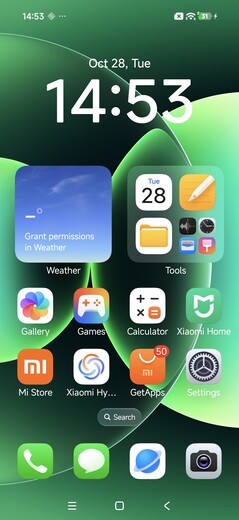
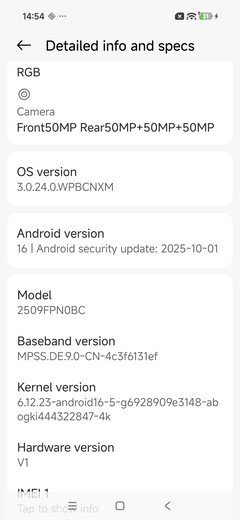


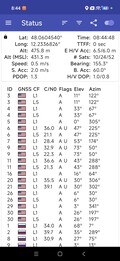




















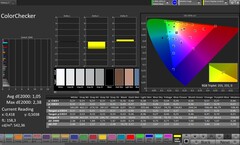



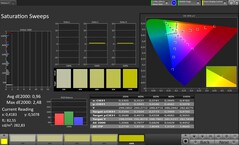

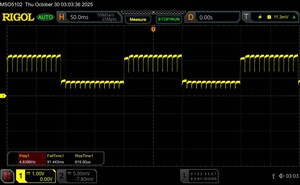
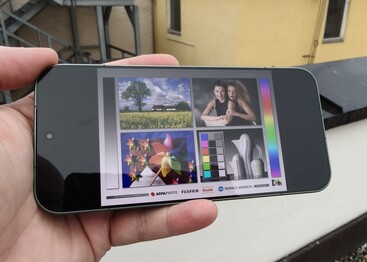



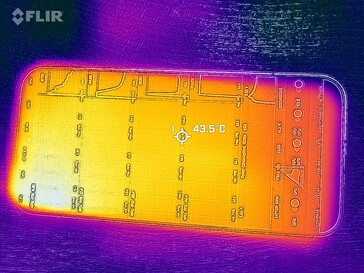
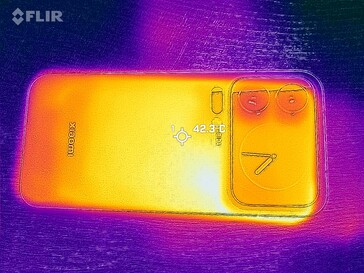
 Total Sustainability Score:
Total Sustainability Score: 






